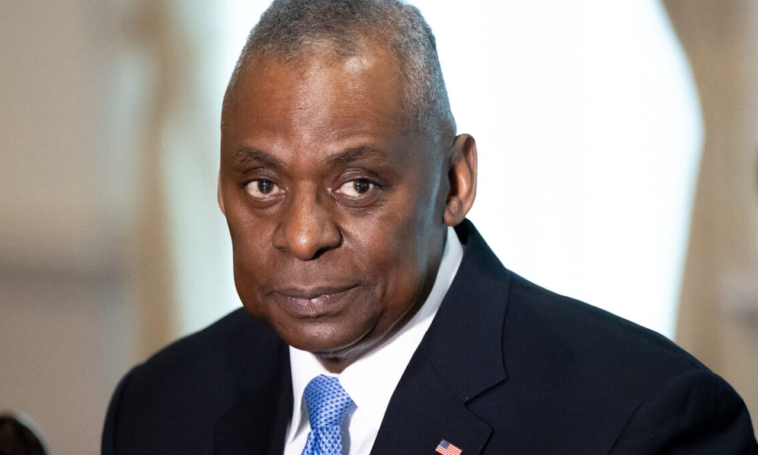Lloyd Austin is back at the Pentagon after hospitalization controversy. Defense Secretary Lloyd Austin has returned to the Pentagon after conducting his duties from home since his release from Walter Reed National Military Medical Center on Jan. 15.
Austin’s return to the Pentagon follows a period of hospitalization due to an infection following prostate cancer surgery. The defense secretary’s absence and the handling of information about his health sparked controversy in Congress, leading to internal reviews and investigations.
Austin began his return with an in-person meeting with NATO Secretary General Jens Stoltenberg. The meeting opened with Austin expressing outrage and sorrow over the deaths of three U.S. service members in a drone strike at the Tower 22 base in Jordan.
He emphasized the U.S.’s unwavering commitment to defending its forces and taking necessary actions against those responsible for the attack.
Stoltenberg extended condolences for the troops killed and wounded, attributing the incident to “radical Iran-backed militant groups.” The NATO secretary general highlighted Iran’s destabilizing actions in the region and commended U.S. leadership in countering such threats.
The defense secretary had entered the hospital on Jan. 1 due to an infection resulting from prostate cancer surgery on Dec. 22. The incident raised concerns after lawmakers learned that the White House and Deputy Defense Secretary Kathleen Hicks were not notified of Austin’s hospitalization until Jan. 4.
The lack of timely communication led to a 30-day internal Pentagon review, examining notification policies during transitions of authorities. Additionally, the DOD inspector general initiated an investigation into the matter, and the White House launched a review of protocols for how Cabinet officials delegate authority.
The controversy extended to the public disclosure of Austin’s prostate cancer diagnosis. Despite the cancer being discovered during a health screening in early December, the White House was unaware of the diagnosis until it was publicly announced on Jan. 9. The revelation prompted questions about transparency and communication within the highest echelons of the defense establishment.
As Austin resumes his duties at the Pentagon, the internal review and investigations are likely to delve into the communication protocols and notification procedures during critical health situations involving top officials.
The incident has prompted a broader examination of the processes in place to ensure transparency and timely communication, especially when high-ranking officials face health challenges.
The defense secretary addressed his recovery, stating that he felt good but was still in the process of recovering. He expressed appreciation for the good wishes he received during his absence.
Austin’s acknowledgment of his ongoing recovery signals a focus on both physical recuperation and resuming the responsibilities of his crucial role in the defense establishment.
The internal Pentagon review and the investigations into the handling of Austin’s hospitalization will provide insights into areas where communication protocols can be strengthened and streamlined. The goal is to ensure that key officials, including the White House, are promptly informed of significant developments, especially those related to the health of top leaders.
The incident has underscored the importance of clear lines of communication, not only within the Pentagon but also between the Department of Defense and the highest levels of government.
The defense secretary’s return to the Pentagon serves as a transition point, signaling a renewed commitment to his duties and a resolution to address any shortcomings in communication procedures that were exposed during this period.
READ ALSO
Defense Secretary Lloyd Austin called by Congress to testify about hospitalization




Join the Community and Be a Part of the Conversation
You must be logged in or registered to post a comment.